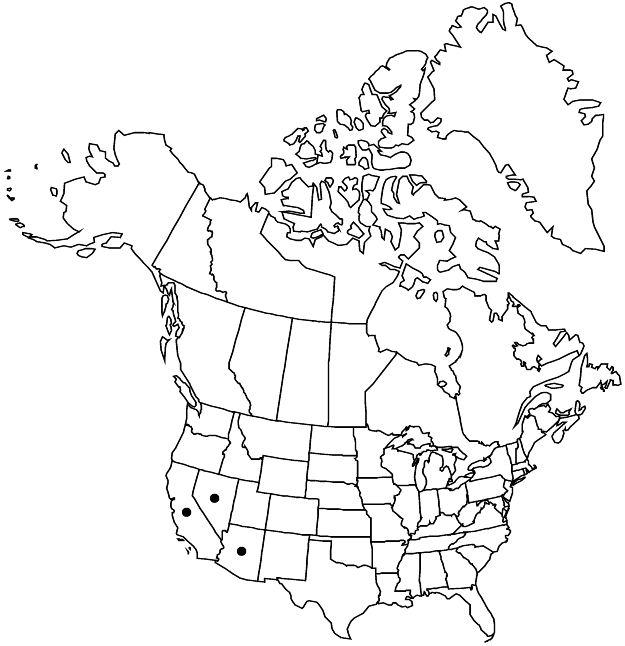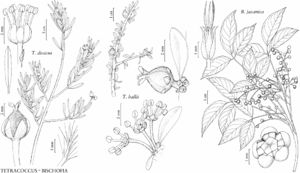Difference between revisions of "Tetracoccus hallii"
Zoë 5: 229. 1906.
FNA>Volume Importer |
FNA>Volume Importer |
(No difference)
| |
Revision as of 18:17, 24 September 2019
Shrubs to 2 m. Leaves alternate and clustered on short shoots; blade obovate to oblanceolate, 2–12 × 1–4 mm, base cuneate, margins entire, apex obtuse. Inflorescences: staminate flowers in fascicles of 2–20 on short shoots; pistillate flowers solitary or in fascicles of 2–6 on short shoots. Pedicels: staminate present; pistillate 1–3 mm, strigose. Staminate flowers: sepals 4–8; stamens 4–8, filaments glabrous. Pistillate flowers: sepals 5, in 1 series, greenish with red margins, 2–3 mm, sparsely strigose on both surfaces; pistil usually 3-carpellate, 1.5–2 mm, strigose. Seeds 1(–2) per locule, brown, ovoid to pyriform, 3–4 mm, both radial surfaces usually rounded, wrinkled near hilum; caruncle absent.
Phenology: Flowering Mar–May and sporadically year-round.
Habitat: Desert slopes and dry washes on igneous substrates.
Elevation: 30–1200 m.
Distribution

Ariz., Calif., Nev., Mexico (Baja California).
Discussion
Tetracoccus hallii is very similar to the wholly Mexican calciphile T. fasciculatus.
Selected References
None.
